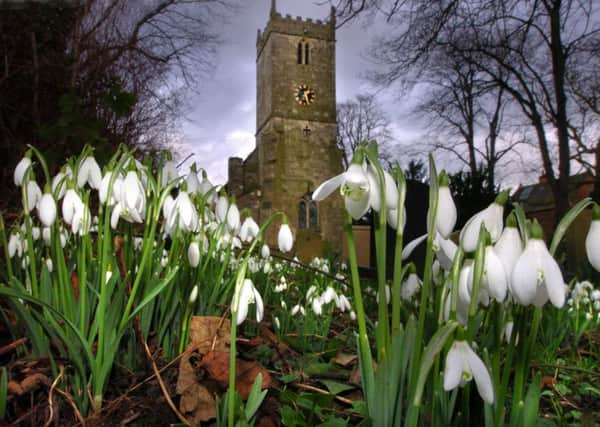Country & Coast: Innocent awakenings offer the first signs of spring


There’s plenty of photographic evidence of them already sprouting up more or less everywhere in England thanks to the snowdrop hashtag on Twitter, and the attached pictures are usually accompanied by comments like “a nice surprise on a gloomy January morning” and “spotted these brave little fellas amongst the frost”.
The appearance of snowdrops is perhaps the most eagerly anticipated event in the British countryside, providing proof that nature is reawakening and spring is relentlessly advancing even if everything else seems to be stuck in winter mode, but it can be frustrating when they are slow to sprout in places you know they are present. Patience is always rewarded, though, and the finest displays of these lovely white pearls usually appear around the religious Candlemas feast of February 2. In fact, one of the snowdrop’s many names is the Candlemas Bell while another is the February Fairmaid.
Advertisement
Hide AdAdvertisement
Hide AdYorkshire puts on some fine shows of the flower. My favourite is in the woods at Burton Agnes, near Driffield, where the white carpets of flowers are so dense they really do take on the appearance of snowdrifts. The owners of the Elizabethan hall promote these seasonal displays as a “Snowdrop Spectacular” and draw thousands of visitors. This year it runs between February 4 and March 5.
There are many other public snowdrop walks such as the ones at Goldsborough Hall to the east of Knaresborough, at Brodsworth Hall outside Doncaster, and Devonshire Mill near Pocklington. But I get the most joy from finding them quite unexpectedly growing in small clumps while out walking, whether they are along a grass verge beside one of Wharfedale’s back lanes or whitening an otherwise lifeless country churchyard.
There is some controversy over whether country snowdrops Galanthus nivalis are actually native to Britain or were planted. The first records of them growing wild was in the 1770s, in Gloucestershire and Worcestershire. However, they have long been associated with the grounds of monastic ruins which predate that discovery by many centuries. In Yorkshire, they flourish at the 12th century Cistercian Roche Abbey near Maltby, and at Mount Grace Priory on the edge of the North York Moors, where Carthusian monks lived as hermits from the 14th century.
It’s one of the few flowers to have a superstition attached to it. In some areas a single flower is known as a “death token” because they look like a corpse in a shroud. And you are tempting bad luck if they are cut and taken indoors. In Yorkshire, they were also a symbol of virginity, and it was a tradition at Candlemas for young women to wear them as evidence of their purity, the origin being pretty clear - in the catholic church Candlemas is “the Feast of the Purification of the Virgin Mary”.